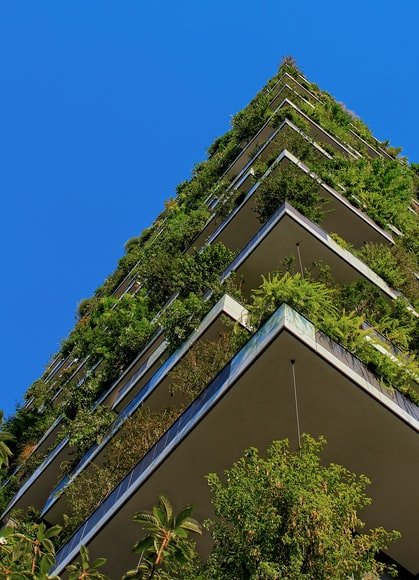
Sustainable construction means using renewable and recyclable materials when building new structures, as well as reducing energy consumption and waste. The primary goal of sustainable construction is to reduce the industry’s impact on the environment.
Like many other industries, construction is now under increasing pressure to be more environmentally sound and socially responsible.

As an industry, it contributes 11% of the world’s greenhouse gas emissions and its current volume of natural resource utilisation is not sustainable. This clearly shows that the construction industry faces significant challenges in reducing its environmental footprint.
Climate change, resource consumption, and water management are all environmental issues that must be carefully considered when working towards sustainability in construction.
Construction can also result in hazardous waste, and the improper disposal of such waste can result in pollution that affects not only the environment, but also the health of people living in that area.
In bid to achieve sustainability in construction, as per the Code for Sustainable Homes and Leadership in Energy and Environmental Design (LEED) certification from the Washington, D.C.-based U.S. Green Building Council (USGBC), construction companies employ various processes that will enable them to achieve this goal.
These processes may include MMC – modern methods of construction, renewable energy on job sites and controlling waste of materials from construction sites. With an increasing amount of attention on the environmental impact of every industry, more construction projects require sustainable construction practices.
Construction cameras are an emerging technology being used by many construction companies to achieve sustainable construction practices on their sites. The automated capture and processing of data from construction cameras ensures operational sustainability.
Planning capabilities delivered by reality capture make it possible for operations to understand the impact of construction on the surrounding environment, and a plan for proper waste management. Proper drainage facilities are put in place so that concrete wash doesn’t settle or contaminate the water in the environment.
Artificial intelligence used by construction cameras, such as Evercam’s Gate Report feature ensures that the time difference between entry and exit of the vehicles to site is monitored and carbon print is properly regulated.
A contractor is able to control how many vehicles leave the source of material to site at a particular time. Accessing a live view of a construction site can enable construction teams to view progress from anywhere which in turn will reduce commute emissions, fuel consumption, road congestion, and noise pollution.
Using building information modelling (BIM) data generated during design and build over the whole project lifecycle enables faster, safer, less wasteful construction and more cost-effective, sustainable operation, maintenance, and eventual decommissioning.
Co-ordinated BIM input provided by all project partners aids sustainability in many ways at three key stages: the design, construction, and maintenance phases:
BIM fosters a more transparent process at the design phase. The transparency afforded here allows for contractors, energy engineers, suppliers, and more to advise on the structure’s overall construction and operation of the building early on, providing greater sustainability at the design phase before spending anything.
This means that only environmentally-responsible materials and methods are used, as well as saving time and money on reworking and rescheduling.
The 3D models provided by BIM allow users to verify that the project is on-time by comparing real-time footage to the BIM model or fast forward to see where the project should be in two weeks, allowing for workflows to be reviewed and enhanced at every stage.
BIM allows full, detailed component information to be embedded in the asset model. This can then be used to plan maintenance activities for assets so that major repair and replacement programs can be synchronised, minimising cost and disruption.
Evercam offers solar powered cameras,ensuring the use of renewable energy when required. The use of such cameras helps to reduce the on-site carbon footprint since there is no need for cable connection or use of generators.
Having a 24/7 live view of your job site keeps you connected to your project from anywhere. Having a reliable distance monitoring tool, reduces frequent personnel site visits, allowing to reduce commute emissions, fuel consumption, road congestion, and noise pollution.
Stakeholders are able to receive scheduled updates regularly and follow the key events of the project and particular milestones as and when needed.
Using the Snapmail feature to receive emails with a snapshot from the camera directly to the users inbox results in reduced number of site visits, thereby helping construction companies to comply with city regulations of sustainable mobility, reduced road congestion and the transition to reduced carbon emissions.
With Evercam construction camera software, everything that happens on your construction site is recorded during the entire duration of a project, in high resolution, and stored in the cloud. Users can go back at any point in time and remotely verify events that occurred on site.
That can be used to; reduce energy consumption e.g ensuring that lights are off after working hours and also help in monitoring compliance with construction waste management plans.
Construction cameras are becoming more and more useful in sustainable construction as they document best practices in projects for future reference. Construction companies are using time-lapse footage to market green projects and showcase their commitment to sustainability.
To find out more about our software, get in touch with us today.